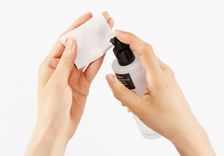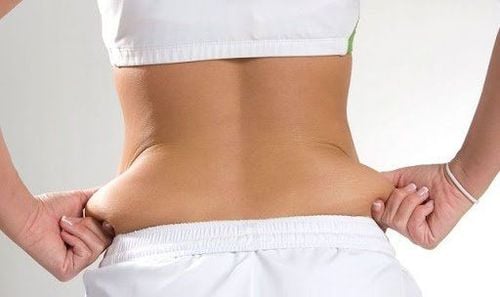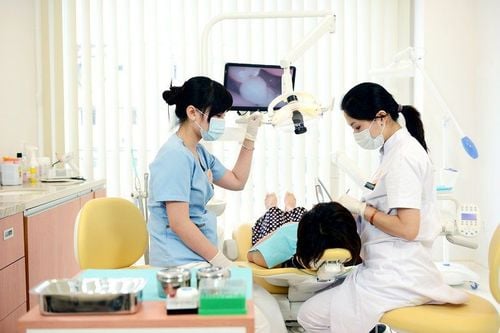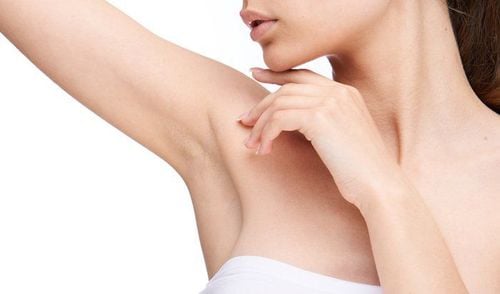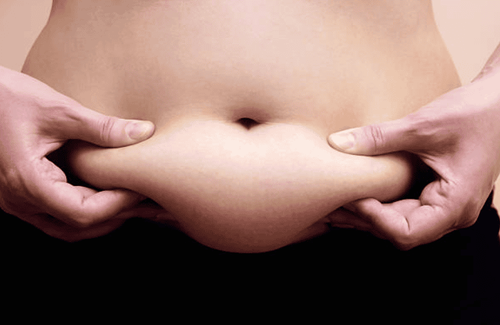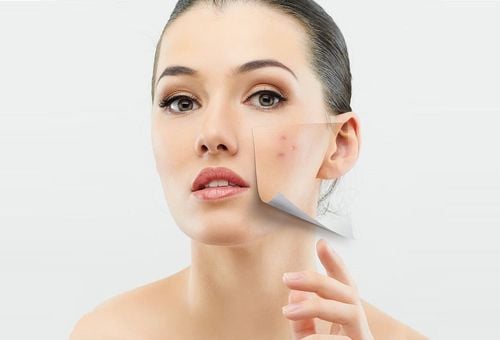This is an automatically translated article.
Liposuction is a cosmetic surgery that helps to remove excess fat from the body instead of exercising and dieting. Currently, liposuction surgery is often applied in many places such as hips, buttocks, back, arms, under the chin, face or abdomen.
1. Abdominal liposuction overview
Abdominal liposuction is a type of surgery that uses advanced techniques to remove fat from the abdomen. Currently, abdominal liposuction not only helps to remove excess fat but also shape (contour) to create a beautiful curve for the body.
Although effective immediately, liposuction is not generally considered an overall or alternative weight loss method. If you are overweight, you can effectively lose weight through diet and exercise or interventional weight loss procedures such as gastric bypass surgery.
2. Is liposuction effective?
Currently, liposuction is used to remove fat from areas of the body that do not respond to diet and exercise, such as:
Abdomen; Upper arm; Butt; Calves and ankles; Chest and back; Hips and thighs; Chin and neck. In some cases, liposuction can also be used to reduce breast size or to treat gynecomastia (an enlarged breast tissue in men).
Among the types of liposuction, abdominal liposuction is the most common indication. After liposuction, the skin will mold itself to new contours in the treatment areas. If you have good skin tone and elasticity, it will still look smooth. However, if your skin is thin with poor elasticity, it will look saggy and wrinkled.
To have abdominal liposuction surgery, you need to be in good health, without complicating factors for surgery such as high blood pressure, coronary heart disease, diabetes or an underactive immune system.
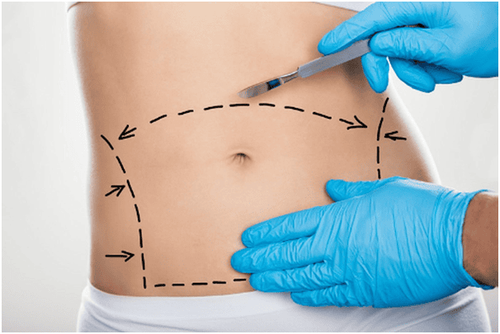
Hút mỡ bụng giúp loại bỏ chất béo từ bụng
3. Does liposuction have any effect?
Similar to any surgery, liposuction has potential risks such as bleeding and allergic reactions to the anesthetic. Possible complications of liposuction include:
Irregular contours: After liposuction, your skin may become rough, wavy, or wrinkled due to uneven fat removal. , poor skin elasticity and abnormal wound. These changes are sometimes irreversible. In addition, damage below the skin caused by the catheter used during liposuction can also cause permanent scarring of the skin. Fluid Collection: Temporary fluid collections may form under the skin, often containing serum. This post-abdominal liposuction complication can be managed with drainage. Stinging sensation: You may feel temporary or permanent numbness in the area of the liposuction surgery. Infection: The frequency of skin infections is very low, but not impossible. Severe skin infection after abdominal liposuction is a serious complication that can be life-threatening. Injury to abdominal organs: Rarely, abdominal liposuction can puncture an internal organ. However, if it happens unfortunately, this complication needs to be treated urgently so as not to endanger the patient. Fat embolism: After liposuction surgery, pieces of loose fat can break off, get stuck in a blood vessel, and collect in the lungs or travel to the brain. Fat embolism is a medical emergency. Kidney and heart problems: Changes in fluid levels when injected into and out of the body can cause life-threatening kidney, heart, and lung problems. Lidocaine Poisoning: Lidocaine is an anesthetic commonly given by injection during liposuction to help relieve pain. Although safe, in rare cases, lidocaine toxicity can occur and cause serious heart and central nervous system problems.
4. What to prepare before abdominal liposuction surgery?
Before your liposuction procedure, discuss with your doctor what to expect from the surgery. Your surgeon will review your medical history and ask about any possible medical conditions, medications, supplements or herbs you are taking.
Your doctor will recommend that you stop taking some medications at least 3 weeks before surgery and also perform some necessary laboratory tests.
If you only require the removal of a small amount of fat from the body, the surgery can be performed in a normal setting. However, if a large amount of fat must be removed or you plan to have other procedures at the same time, liposuction should take place in a hospital and then need to stay in the medical facility to rest.
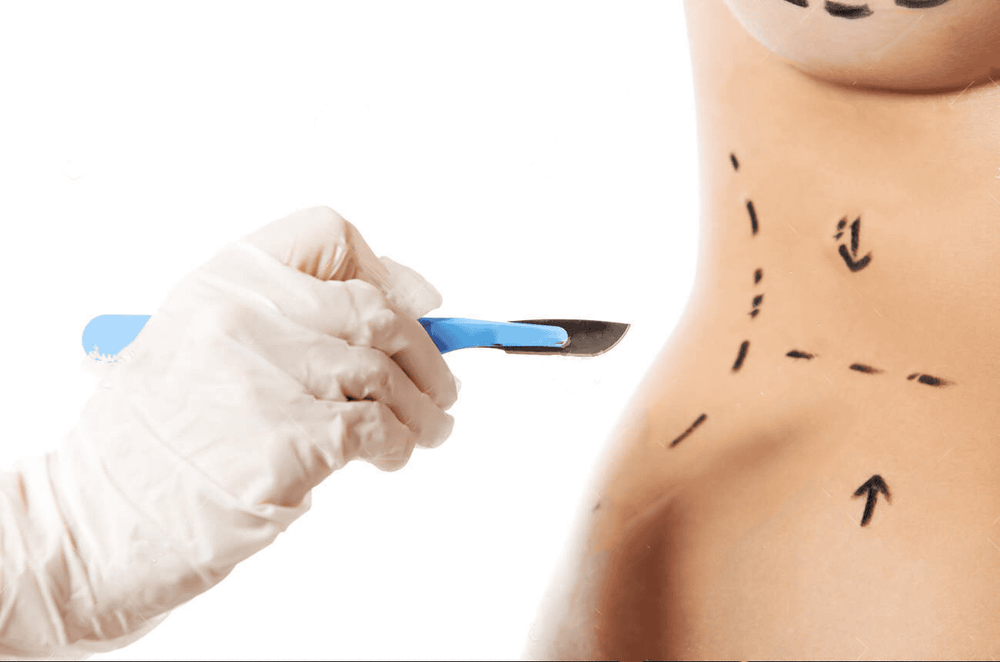
Hút mỡ bụng cũng có những rủi ro tiềm ẩn như chảy máu và phản ứng dị ứng với thuốc gây mê
5. Some current abdominal liposuction surgical methods
Before the procedure, the surgeon may mark circles and lines on your abdomen. How your tummy tuck is performed will depend on the specific technique.
Some popular methods of abdominal liposuction today include:
Autologous liposuction: This is the most common type of liposuction. The doctor will inject a sterile solution that is a mixture of saline, which helps to remove fat, a numbing medicine (lidocaine) to relieve pain, and a drug (epinephrine) that constricts blood vessels - into the surgical area. The fluid mixture causes the area to swell and harden. The surgeon then makes small incisions in the skin and inserts a thin tube called a catheter under your skin. The catheter is connected to a suction machine to suck fat and fluid from the abdomen. A certain amount of fluid may be given through an intravenous (IV) line. Ultrasonic Assisted Lower Abdominal Liposuction (UAL): This type of liposuction is sometimes used in conjunction with traditional liposuction. During UAL, the doctor inserts a metal rod that emits ultrasound energy under the skin. The ultrasound waves break down the fat cell walls and break down the fat to make it easier to remove them. The new generation of UAL can improve skin contour and reduce the risk of skin injury. Laser-assisted liposuction (LAL): This technique uses intense laser light to break down fat before it is actually removed from the body. During LAL, the surgeon inserts a laser fiber through a small incision in the skin and emulsifies the accumulated fat. The fat is then removed through a catheter. Power-assisted Liposuction (PAL): This type of liposuction uses a suction tube that moves back and forth and moves quickly. This vibration allows the surgeon to pull out the fatty tissues more easily and quickly. PAL can sometimes cause less pain and swelling and can allow the surgeon to remove fat with greater precision. Your surgeon may choose this technique if a large amount of fat needs to be removed or if you have had liposuction before. During tummy tuck surgery, the surgical team will monitor your heart rate, blood pressure, and blood oxygen levels. If you are under local anesthesia and feel pain during surgery, talk to your doctor about the appropriate treatment.
1 Abdominal liposuction surgery can last up to several hours, depending on how much fat is removed.
If you were given general anesthesia, you will gradually wake up in the recovery room. Usually, you'll need at least a few hours in a hospital or clinic so the medical staff can monitor your recovery. If you are in the hospital, you should stay overnight to limit unwanted effects after surgery such as not being dehydrated or going into shock from dehydration.
6. Notes after liposuction surgery
Notes after abdominal liposuction to ensure safety and no complications include:
You may experience pain, swelling and bruising after abdominal liposuction surgery. In this case, your surgeon may prescribe medication to control pain and antibiotics to reduce your risk of infection. After surgery, the doctor may leave the incision open and place a temporary drain to facilitate drainage of any remaining fluid. You need to avoid wearing tight clothing to help reduce swelling for a few weeks. You may need to wait a few days before returning to work and a few weeks before resuming your normal activities - including exercise. During this time, some contour irregularities are expected as the remaining fat is deposited. After liposuction, swelling usually subsides within a few weeks. After liposuction, it is natural for the skin to lose its firmness due to aging, but the results of liposuction are generally long-lasting, as long as you maintain your weight. If you gain weight after liposuction, your fat distribution may change.
Please dial HOTLINE for more information or register for an appointment HERE. Download MyVinmec app to make appointments faster and to manage your bookings easily.


